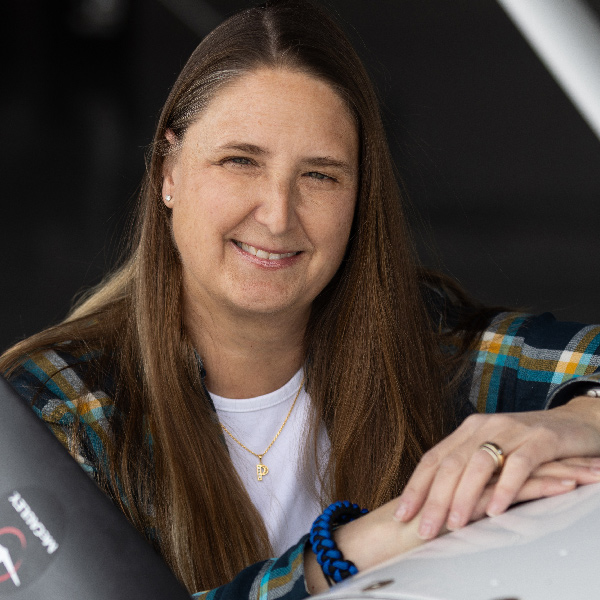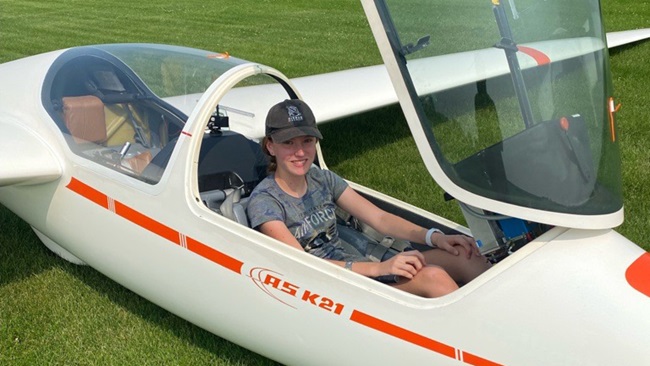Schweizer, elevated
An aviation family’s legacy lives on
Sheldon the dog is blissfully unaware of the family dynasty into which he was adopted.
The two-and-a-half-year-old blonde lab mix is the official greeter at a company called K&L Soaring, housed in a handful of unassuming beige industrial buildings on the west side of New York State Route 224, just north of Elmira.
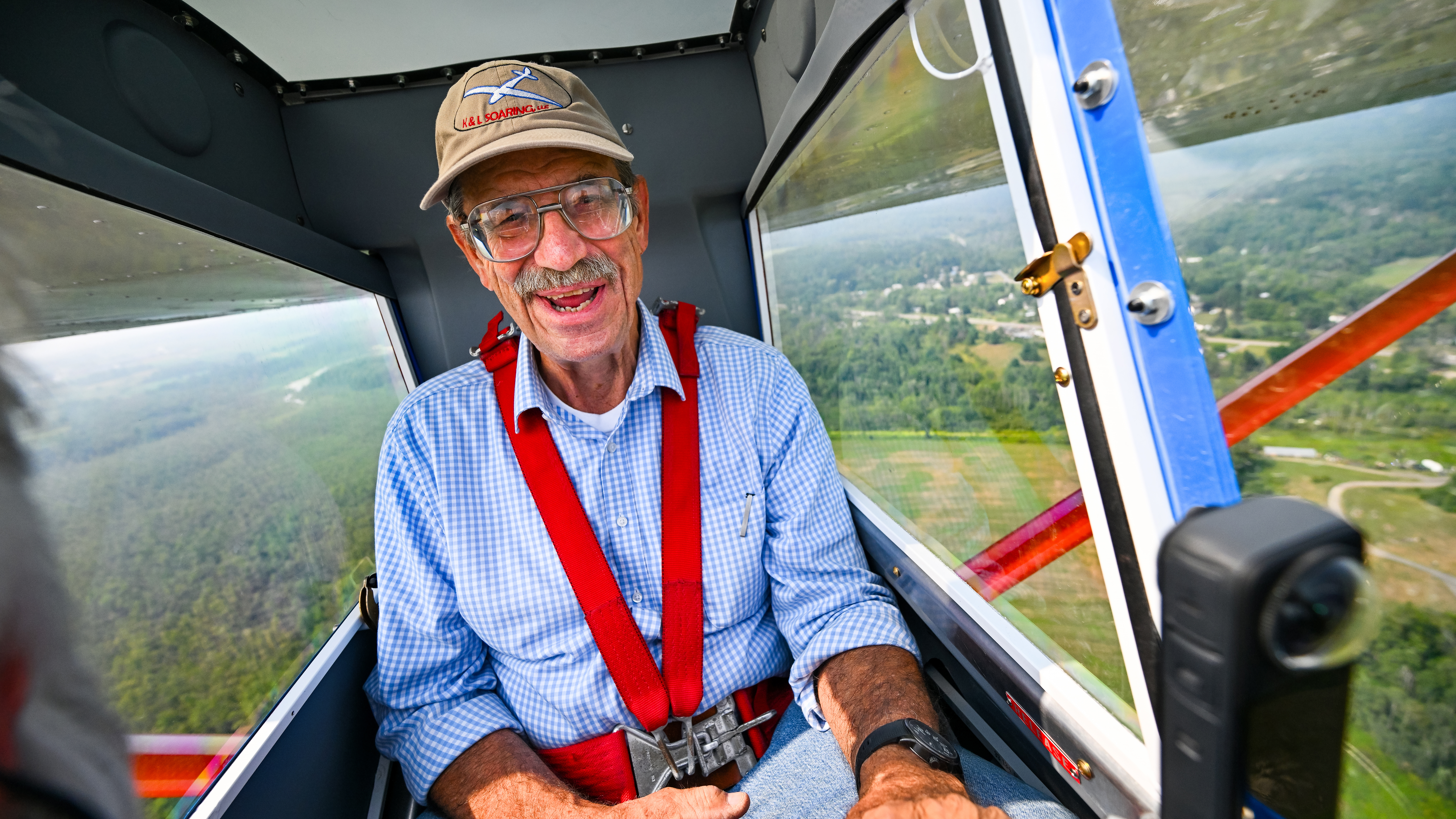
But concealed behind the simple sign and unremarkable surroundings is a name and a brand that represents a rich slice of North American aviation history: Schweizer.
“I would hope that the Schweizer name is synonymous with what American soaring is,” says Kyle Schweizer, the “K” in K&L Soaring, dog-dad to Sheldon, and the third-generation representative of a family tree whose branches have been inextricably woven into the sport for almost 100 years.
Ernest—Kyle’s grandfather—and his younger brothers Paul and William are, for lack of a better word, sailplane royalty. Aviation historians agree that without their iconic designs the sport would not have developed in North America when and how it did.



In 1930, Ernie, Paul, and Bill were just 18, 17, and 12 years old, respectively, when they built their first sailplane, the single-seat SGP 1-1. Inspired by German models in use at that time, the aircraft came together in the family barn in Peekskill, New York, and without the knowledge of their father.
“He didn’t really approve,” says Ernie’s only son, Les Schweizer, the “L” in K&L, and father of Kyle. “When it was completed, he came up to the barn and sort of looked around and turned and left and they said, ‘Well, it must be all right.’”
All three flew SGP 1-1, including Bill, the youngest, essentially teaching himself to fly at the tender age of 13.
Around the same time, the Chemung Valley had become the “soaring capital of America”, its rolling hills and microclimate attracting pilots from across the country. The knowledge of thermals as a source of lift was still not widespread, so pilots used ridge lift—rising air on the windward side of a slope—to keep their aircraft aloft. In 1930, Elmira held its first of 13 consecutive national championships, with several launch points available depending on the wind’s direction and speed.
After their initial success, the brothers went on to form the Schweizer Aircraft Corporation, moved to Elmira in 1939, and in the following 40-plus years designed and built 22 different sailplane models.
Kyle says the three brothers ran the company until the 1970s, when Les and his cousins Paul and Stu took over the company. Through the years, the Schweizers were flexible and astute, pivoting their business as needed. The company stopped building gliders in the early 1980s, having by then branched out into single-engine biplane agricultural aircraft, reconnaissance aircraft, and helicopters. Of 6,000 airframes built, however, about 2,170 were sailplanes. They also did contract work for other aviation and aerospace companies.
“Gliders were their love, but they were never more than 25 percent of the company. It’s not what kept the doors open,” says Kyle.

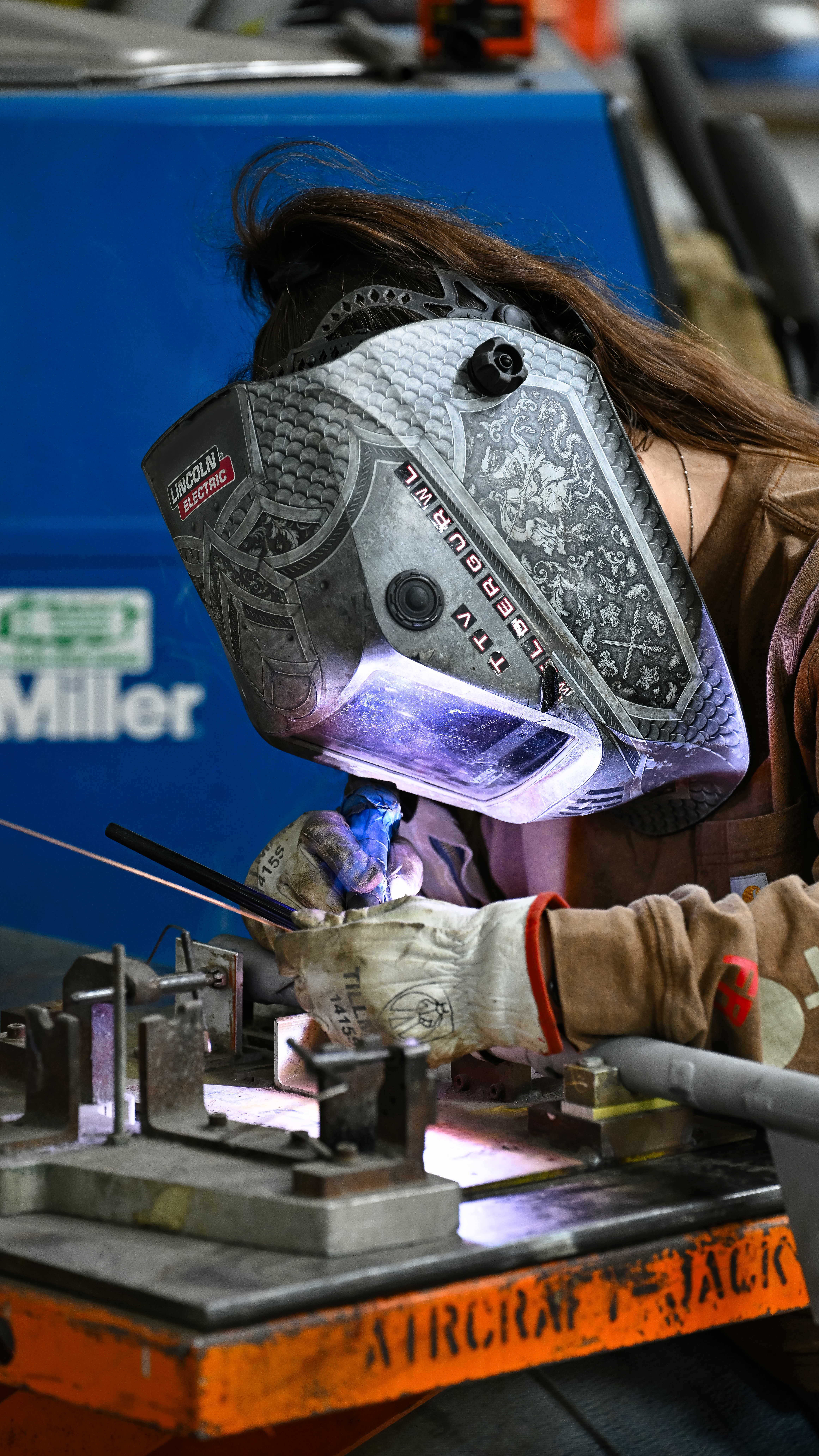
Today, about 1,100 Schweizer gliders are still out there. Some are in good shape, airworthy and still seeking thermals, others are in pieces. And the Schweizer legacy lives on through Kyle and his father Les, who have made it their life’s mission to care for and carry on their forefathers’ work. The attention to detail, deep love for the sport and the craftsmanship behind it is baked into their DNA.
“I started in the family business when I was 13, working out in the soaring school as a line boy, hooking up gliders, cleaning gliders, and moving them around,” Kyle says. During college he began doing engineering and drafting work before joining Schweizer full-time after graduation.
The family sold Schweizer to Sikorsky in 2004. Two years after that, the father-son duo bought the remaining glider spare parts, some factory jigs and tooling equipment as well as the type certificates from Sikorsky, to start their own parts business.
When you think about what my grandfather and my two great uncles did at the time, I mean, they built their first glider in their barn when they were in high school.... They just drew up some designs and built it. And I think carrying on that legacy is pretty important. —Kyle SchweizerThey began selling the glider parts out of Les’s garage and officially formed K&L Soaring in 2007. Word got out quickly that the descendants of the legendary Schweizer brothers were building something upon the decades-long heritage. Schweizer sailplane owners and clubs across North America began seeking out their expertise. Les, who was Sikorsky’s chief engineer, left the company first, and Kyle made K&L his primary occupation in 2010.
“We had an employee or two at that point in time, I went from having to do it nights and weekends to doing it during the day, too.” Kyle Schweizer, now 46, does most of the office work, such as invoicing and ordering, and a bit of drafting and engineering. Les is out in the shop, doing much of the repair work and craftsmanship.
“I enjoy working on the aircraft, and I still have a long list of aircraft to work on before they plant me,” the 77-year-old elder Schweizer says.
They quickly got their first major client, the Air Cadet League of Canada, a nonprofit organization whose mission is to encourage young Canadians to develop and maintain an interest in aviation and leadership. The league operates 82 Schweizer gliders that flew nearly 25,000 sorties last year. That requires a lot of spare parts and regular ongoing maintenance.
“As soon as we started, the Canadian government descended upon us,” Kyle says. “And at that point, we said, well, we’re going have to actually think about starting to produce parts and set up a building to make those parts.”



K&L built a dedicated workshop, a warehouse, and three grass landing strips on Les’s 150-acre plot of land off NY State Route 224.
Later, the league asked K&L Soaring to repair some of its damaged wings and fuselages, and it appeared they were anxious for the company to take on even more.
Les and Kyle quickly ran out of space servicing the Canadian fleet. By 2012 K&L Soaring had doubled the workshop’s area to 12,000 square feet and also enlarged the warehouse.
“As we expanded the building, we also expanded what we were doing for the Canadians,” he says. “At one point they were 95 percent of our business,” Kyle says.
The Air Cadet League of Canada remains K&L’s biggest individual client to this day. But the duo also knew that it was risky for K&L to put all of its eggs in a single basket. Thanks to their name, they were able to diversify their client list.
“In our facility right now, we’ve got one [glider belonging to] a STEM school that’s having a refurbishment done, another belongs to a nonprofit organization that’s sort of a wounded warriors program. One is an individual’s ship that he just wants to have refurbished.”
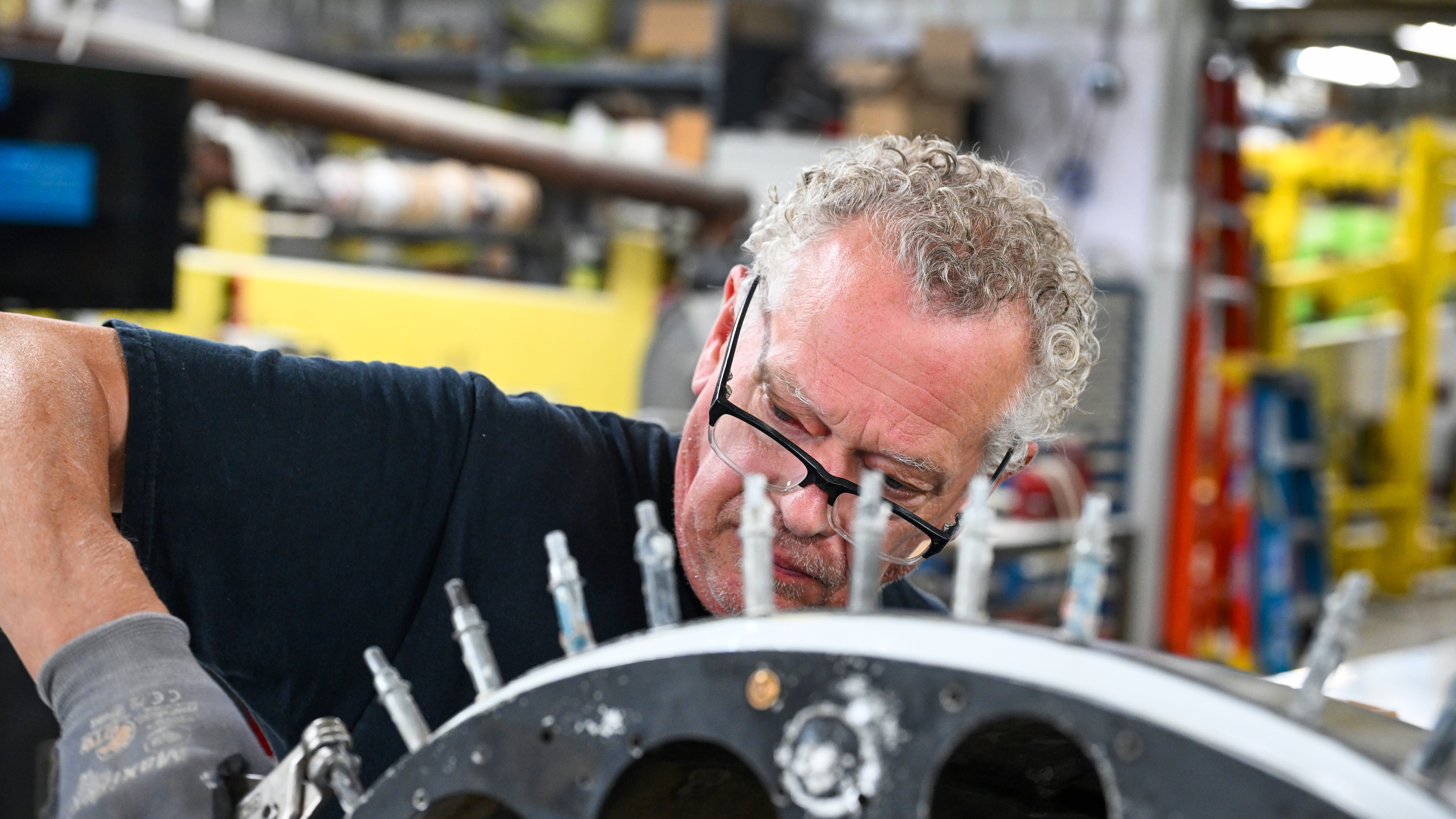
A full refurbishment generally starts in the mid-$40,000s, and takes three to four months to complete. The company can take on about five or six refurbishments and dozens of smaller jobs every year.
But forget about bringing your trashed Schweizer sailplane to K&L this winter and expecting to have it back in time for the spring soaring season. K&L Soaring has a year-long backlog of work.
“It depends if you’re bringing us an airworthy aircraft, or you’re bringing us a pile of wreckage. Obviously, these aircraft have been around for a number of years,” said Kyle. So, many come in less-than-pristine condition. “They all need work, but it’s sort of: What level of work is needed?”
The oldest aircraft the duo worked on was built in the 1940s, and vintage 1950s airframes often pass through their shop.
However, not every project is a complete refurbishment. Sometimes, it’s just some parts that require tweaking, or a dinged wing tip that needs replacing, or a paint job that needs freshening-up. Those can be completed in a few weeks.
K&L’s parts warehouse, meantime, is a treasure trove of bits and pieces of designs spanning all of Schweizer gliding history.
“We’ve got complete fuselages hanging from the rafters here in the warehouse, because we try to actively get ahead of some of our projects by getting a fuselage complete and ready to go,” Kyle says. “So, when a customer comes to us for a refurbishment, we can just say, OK, we’re going to trade fuselages with you and move on and try to shorten our time window for the project.”
Other pieces include brand-new canopies formed in the on-site oven, many disembodied wings (including several zero-hour wings rescued from the Sikorsky-Schweizer stash), spars, and other metal parts.
K&L’s work crew is tight, and the company usually employs six to nine specialists and two summer interns.
“We’ve got part fabrication people, because we try to make as many of our own parts in-house, be it skins, ribs, canopies, interior panels—sort of the whole gamut of what we need—as well as a full-time welder. We can also do fabric covering and paint work. And then we’ve got aircraft assembly people…for the riveting and then some nut and bolt work on these aircraft.”


On this hot and hazy July day, Kyle and Les showed off a refurbished Schweizer 2-33, with the registration N17903, which was originally manufactured as MSN #283 in 1973. The two-seat Schweizer 2-33 was the company’s most popular trainer sailplane, with 579 units constructed and delivered between 1965 and 1981.
The “B” model—developed by K&L—has some significant improvements over the original “A” series.
“We’ve stretched the back seat, added a nose wheel, moved the release mechanism, and it’s got a higher gross weight. So, it’s a newer version of the A model to make it a little more pilot-friendly. You can add all the modern bells and whistles like full ADS-B in and out, a transponder, or a FLARM glider collision avoidance system.”
N17903 now wears a bright blue and orange livery, and it will stay local. It belongs to the Harris Hill Soaring Corporation, which offers glider rides to the public during the summer months from the National Soaring Museum on Harris Hill, just outside of Elmira.
So far, the company has delivered six “B” models, and has a backlog of four more.
“It’s amazing how appreciative people are,” Les says. “And for us, it’s fun to do.”
A good refurbishment—depending on how the aircraft is then treated and maintained—can last about 25 years, Kyle says.
So… no repeat customers?
“Oh, I’ve gotten many repeat customers,” Kyle adds with a laugh. “They usually damage them somehow. I’ve seen aircraft come in multiple times” for repairs.
Schweizer sailplanes were not for the high-performance specialists, but rather for the masses, because it was their mission to bring as many people into the sport that they could.
“They were trying to make it for everyone,” Kyle says.
Ernie Schweizer and Paul Schweizer died before K&L Soaring was born. But Kyle’s great-uncle Bill, the youngest of the Schweizer boys, lived long enough to see K&L thrive.
“He was a frequent visitor,” Kyle says. “He would stop by once every couple of months, and wander through and see what we’re doing. I think it was a sort of a highlight for him to see that…it’s continuing. He was really proud that it wasn’t dying.”
“When you think about what my grandfather and my two great uncles did at the time, I mean, they built their first glider in their barn when they were in high school,” Kyle adds. “It’s not like there were any around—there wasn’t a kit. They just drew up some designs and built it. And I think, you know, carrying on that legacy is pretty important.”
“I don’t know that I need much more motivation than that.” 
